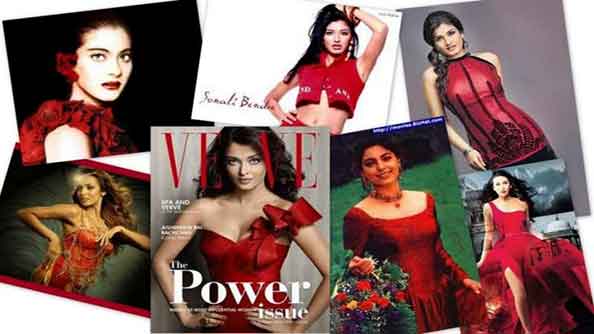Table of Contents
Introduction
The introduction of the Bill against indecent representation of women in the Rajya Sabha in 1986 was in response to the demand by the women’s movement for a legislative action against the derogatory depiction of women in India. Introduced in the Rajya Sabha by Margaret Alva, the bill became law by way of enactment with effect from October 1987.
The law aimed to regulate the representation and portrayal of women in mainstream media, particularly in print media. It was brought into force to ensure that the portrayal of women in media by means of advertisements, writings, publications and illustrations was not such that could be termed “indecent”. Given the time-period it was enacted, the 1986 Act, which continues to be in force, focused primarily on print media and advertising.
Preamble of the Act
The act is aimed to prohibit and regulate the Representation of and portrayal of women in mainstream media, particularly in print media. This Act was enforced to ensure that the portrayal of women in media by the means of advertising, writings, publications, paintings and figures or in any other form is not such that it could be termed as indecent.
Salient Features Of the Act
This act may be called the Indecent Representation Of Women (Prohibition) Act 1986. The jurisdiction of this act extends to the whole of India including Jammu and Kashmir. This act came into force on October 2, 1987 by the appointment of the Central Government by the notification in the Official Gazette.
Section 2
This section of the act deals with the definition of the act, thereby giving meaning to the words which are used in this act. We need to consider this definition of the Act to understand its interpretation, unless the context itself refers to some other definition. Some of these definitions are:
- Advertisement: It includes any form of notice, circular, label, wrapper, or other document and any visual representation by means of any light, sound, smoke or gas.
- Distribution: it includes distribution by way of samples, whether free or paid.
- Indecent Representation Of Women: It has been defined as depiction of a women’s form, body, or any part in such a manner which has the effect of being Indecent and derogatory towards women or denigrating them, and is likely to deprave, corrupt or injure the public morality or order.
- Label: Means any written, marked, stamped, printed or graphic matter, affixed to or appearing upon the package.
- Package: Includes a box, carton, tin or any other container.
- Prescribed: Means prescribed by rules made under this act.
Section 3
This section of the act particularly deals with prohibition of advertisement showcasing Indecency of a woman. It states that no person has a right to publish or intend to publish in future or make arrangements to take part in the publication or exhibition of any advertisement which may tend to lower down the reputation and dignity of women in the society or which is indecent according to the social standards.
Section 4
This section of the act directly deals with restricting the production, distribution, hiring, selling, circulation of any books, pamphlets, paper, slide, films, writing, drawing, painting, photograph or figures which contain material that represent or tend to represent women Indecently or in an obscene manner.
However there are certain exceptions to this:
- This section does not apply to the publication of such items which are approved and justified for public interest and good. For example, If any such books, drawings or pictures are used for the purpose of learning such as science, literature or other objects of general concern, it can be published and distributed.
- If such publication is kept or used with a bona fide intention for religious purposes, such publication of books and drawings can not amount to restriction under this section. For example- Pictures of Shiva’s Linga and Yoni will not amount to Indecent Representation.
- Any sculptures, paintings, engravings on Ancient monuments which comes within the meaning of Ancient Monuments and Archaeological Sites and Remains Act 1958 does not amount to Indecent Representation.
- Any temple, or any car which has any publications, drawings, printing and are used for the conveyance of Idols or kept or used for any religious purposes does not comes under the ambit of this section
- Similarly, production of any films in respect of which the provisions of Part II of the Cinematograph Act, 1952, have been applied does not amount to Indecent Representation Of Women.
Section 5
This section of the act grants the following powers to any Gazetted officer, authorised by the State Government for an area under his jurisdiction:
- With any assistance if required, he may enter and search any place at any reasonable time, if he has the reason to believe that an offence under this act has been committed or is being committed.
- Seize any advertisement or any books, pamphlets, papers, slide films, writings, drawings, paintings and photographs which he believes to be Indecent and contravenes the provisions of the act.
- Examine any record, register, document or any other material object found in any place and seize the same if he has reasons to believe that it may furnish evidence that an offence has been committed under this act.
However, there are exceptions to this rule that:
- Any officer can not enter into a private dwelling without a legal warrant.
- Power of seizure of documents is restricted to only those documents which are depicting Indecency and that are against the provisions of this act. Therefore only such articles, documents or advertisements need to be separated from the rest, without affecting the integrity, utility or saleable value thereof.
- The provisions of the Code Of Criminal Procedure 1973, shall also be applied to any search or seizure of documents under this act because Section 94 of this act has laid guidelines or rules for conducting such seizures and searches with a warrant.
- Lastly, any officer who seizes anything under this act shall as soon as possible have to inform the nearest magistrate and take his orders as to the custody thereof.
Section 6
This section of the act gives various legal penalties or punishments to any person who has breached the provisions of section 3 and section 4 shall be punishable as following:
- On first conviction he shall be imprisoned for a term which may extend to 2 years and with a fine which may extend to 2000 rupees.
- On second conviction he shall be imprisoned for a term of not less that 6 months which may extend to 5 years and also with a fine of not less than 10,000 which may extend to 1 lakh rupees.
Section 7
This section of the act deals with any offence which has been committed by a company, stating that every person who was in charge, at the time when the offence was committed shall be deemed to be guilty and liable and thus, punished accordingly.
However, there are certain exceptions which are as follows:
- Any such person liable for punishment proves that the offence was committed without his knowledge or that he had exercised all due diligence to prevent the offence from being committed.
Under this section if it is proved that an offence which was committed by a company, was committed with the consent or connivance of any director, secretary, manager or any other officer of the company. then they shall be published accordingly.
Section 8
This section of the act states that not taking into consideration anything contained in the Code Of Criminal Procedure 1973, an offence under this act shall be bailable and cognizable.
Section 9
This section of the act justifies the actions or acts of the central government, state government or any gazetted officer under them which are done in good faith, and exempts them from legal suit, prosecution and other legal proceedings.
Section 10
This section of the act has granted powers to the central government, by notification in the Official Gazette to make rules to carry out the provisions of this act. Some of the provisions are as follows:
- The Central Government without any prejudice can make rules in regards to seizure of articles, documents or advertisement, making a list of the seized documents, articles and from whose custody such advertisement and articles have been seized.
- Central government can make rules in other matters as required, or for the ones prescribed in the above provision.
The process of making Rules
Every rule that the central government has made under this act shall be presented before each house of the parliament, while it is in session for a period of 30 days, and if both the houses agree to make such modifications or decline it, such decisions will have effect on the act, however any such modifications or amendments shall be without any prejudice.
Important Case Laws
Ajay Goswami V. Union of India
This is a relevant case which drew provisions from the Indian Penal Code, Indecent Representation of Women (Prohibition) Act etc. to challenge obscene content in newspapers. It also stated that the Press Council’s power to censure needs to be reviewed.
The petitioner’s grievance was that the freedom of speech and expression enjoyed by the newspaper industry was not in balance with the protection of children from harmful and disturbing materials while reading the newspaper which may corrupt their morality.
However the Court dismissed Goswami’s petition for failure “to establish the need and requirement to curtail the freedom of speech and expression” because the newspaper did not have any intention of catering to the prurient interest or harming minors also there are certain regulatory measures in place to ensure that no objectionable material gets published.
In Chandra Raja Kumari Vs Police Commissioner, Hyderabad
In this case, it has been held that the right to life includes right to live with human dignity or decency and therefore conducting beauty contests is repugnant to dignity or decency of women and offends Art 21 of the Constitution.
The decision came in light because a the petition opposing the beauty contests of women in general as they are unconstitutional because they offend Article 51 A (e), Article 21 and Article 14 of the Constitution of India and they are repugnant to international conventions and covenants and the resolutions of the United Nations and conferences on women. They are opposed to the decency, public morality and dignity of women in general and women of Indian society in particular and repugnant to Indian culture, traditions, and the social values. These contests are intended to exploit women for commercial purposes and enrich the organizers at the cost of the indecent representation of women.
Ranjit D. Udeshi vs State Of Maharashtra
Ranjit D. Udeshi was one of the four partners of a firm that owned a book-stall. The partners were prosecuted under section 292 of the IPC for selling copies of an allegedly obscene book, Lady Chatterley’s Lover, by DH Lawrence. Udeshi argued that section 292 is violative of the rights to freedom of speech and expression under article 19(1)(a) of the Indian Constitution and that the book is not obscene if considered as a whole.
The Court examined the text of Lady Chatterley’s Lover and concluded that it was obscene under the Hicklin test. The appeal against conviction was thus dismissed.



